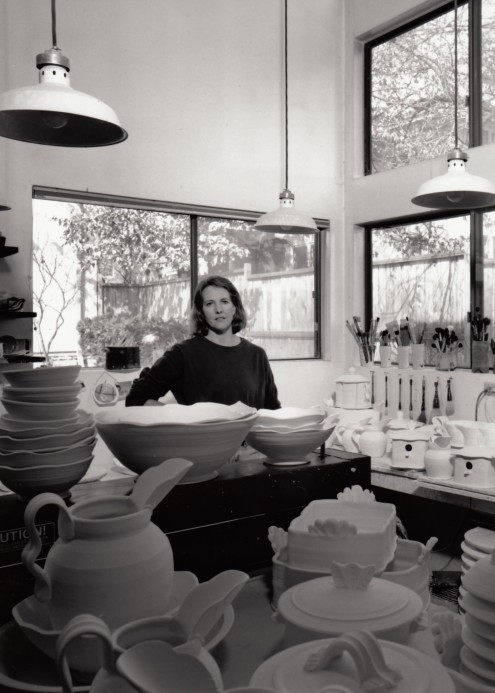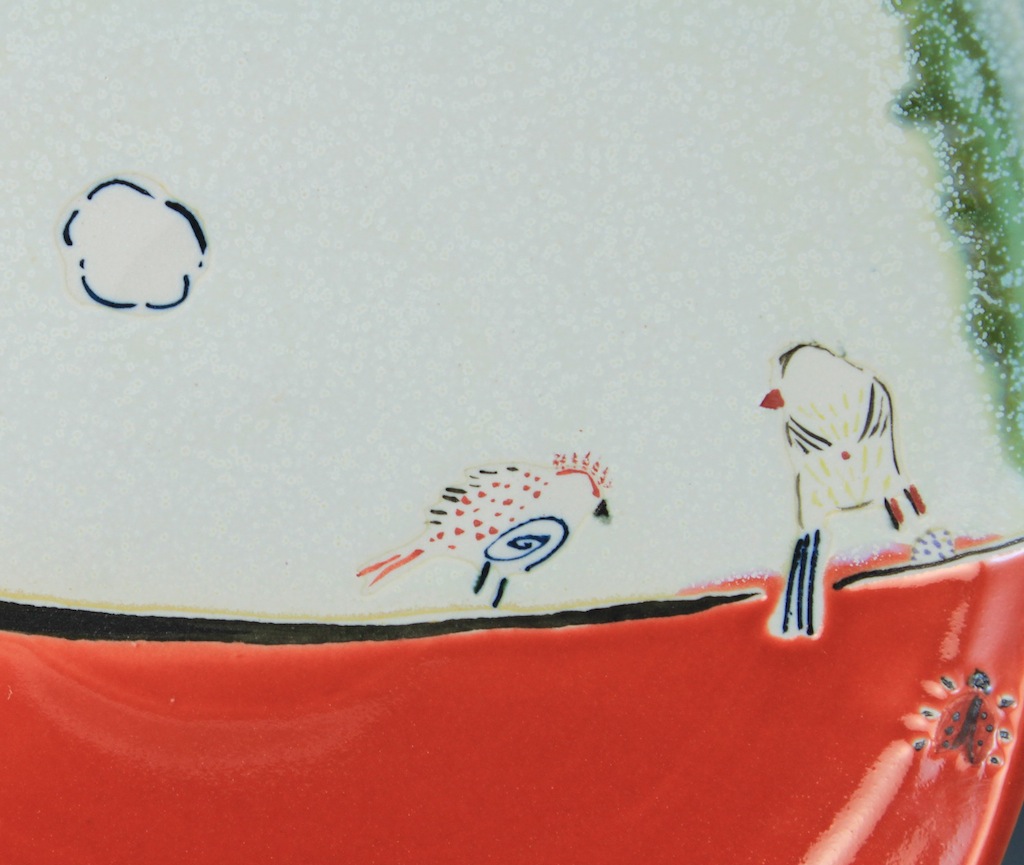Artist Statement

For thirty years, I have been a professional potter exploring my art and craft. Both of these aspects come together to form the life of my work.
In combining traditional and contemporary methods and influences, I have discovered paths that lead me into new and exciting areas. One traditional method I employ is the use of the potter’s wheel–a tool used by potters down through the centuries. Much of my work begins on the wheel for their initial form. When the vessels leave the potter’s wheel, they are just beginning to take shape and develop structure. I begin to add more energy and movement by pulling, pushing, carving, poking, trimming, and altering the pots in many ways to enhance and provide vitality to the form.
Over the years I have worked with many different clays from red earthenware to high fire stoneware. Today, I use a pure, high fire porcelain clay, as it allows for a white background to act as a canvas for my glaze designs. Seduced by this silky, malleable substance as it spins beneath my hands, it has a special quality not found in any other clay.
Inspiration for my surfaces is eclectic and varied. My recent work reflects influences from the textile world. African Asafo Flags, 18th century Japanese ikat kimonos and old pictorial Navajo weavings contain patterns and images that intrigue me.

Since pottery is an ancient art form, I also look to the pots of yesterday for information. Lately, I’ve been studying the figurative scenes taken from daily life as depicted on early (B.C.) Greek vessels. They are compelling for they give us snapshots and stories from a moment in time. These artistic footprints provide a path for me to follow, allowing past traditions to be carried forward, and new ideas are created from a mingling and blending of old expressions.
As I reflect on this progression as an artist, I have always been motivated by experimentation, while always considering the functional aspect of my work important. I know many of my pieces will be used, so pitchers must pour well, teapots must lift with ease, cup handles must feel smooth and comfortable to the touch. I would describe myself as a functional potter who loves to embellish form and surface. I have discovered using repetition of the same form facilitates new ideas. You might compare it to an old Eastern view of life, as seen in Tai Chi (a repetition of sixty-four movements) that out of the repetition of the same form comes new form. The usefulness of my work is a touchstone from which new pots spring and reinforces my belief that making pots is a great way to spend the day.
– Lynn Smiser Bowers

